RYUKYUKAN MATSURI DOJO ESSEX
TRAINING
"THE MORE WE sweat IN TRAINING, THE LESS WE BLEED IN BATTLE"
During a typical lesson, students will be taught Kihon Waza, Uke Waza, Kata and Kumite.
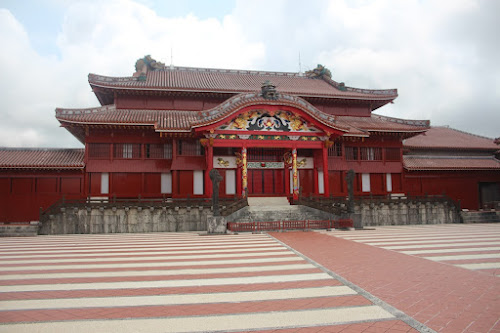
Shorin Ryu Karate 小林流空手
The main technical characteristic of Shorin-ryu Karate is to concentrate one’s power (kime) into the target smoothly, accurately, in the precise instant it is needed. This method of concentrating power is practiced through the kata internally to externally, using movements that are naturally healthy for the practitioner. This practice causes no pressure on the internal organs and little disturbance of respiration. Relaxed natural movement punctuated with focused releases of power causes no unnecessary muscle fatigue. Energy is preserved leaving the body and mind alert and ready to respond as needed.
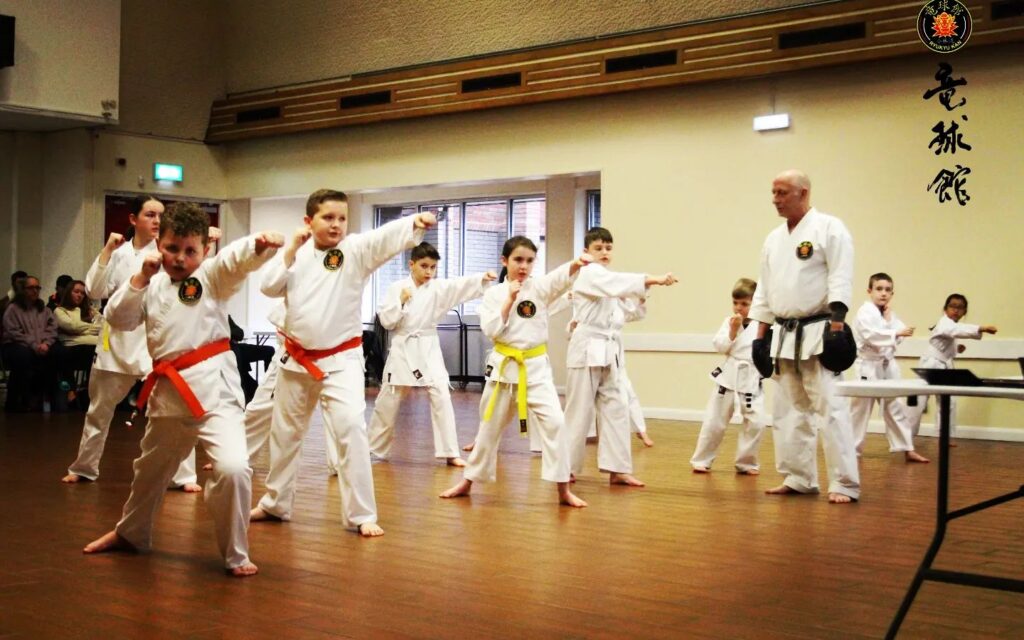
Kihon Waza 基本技 (Fundamental techniques)
How we develop striking and receiving skills.
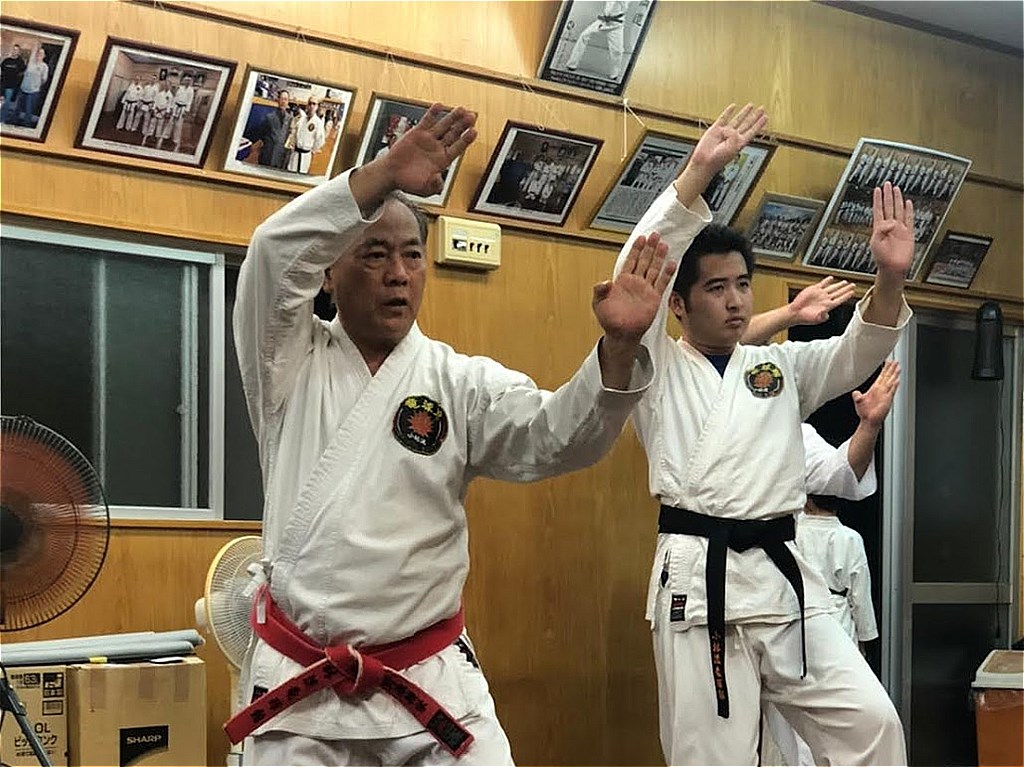
Kata 形 (form).
We teach historically correct Kata of the Shuri-te lineage as taught to all Ryukyukan members through Hanshi Nohara. These patterns teach students fighting skills that have been passed down over hundreds of years.

Uke Waza 浮技 (Receiving techniques)
Uke Waza are performed with a partner and teaches students the correct use of receiving and striking.
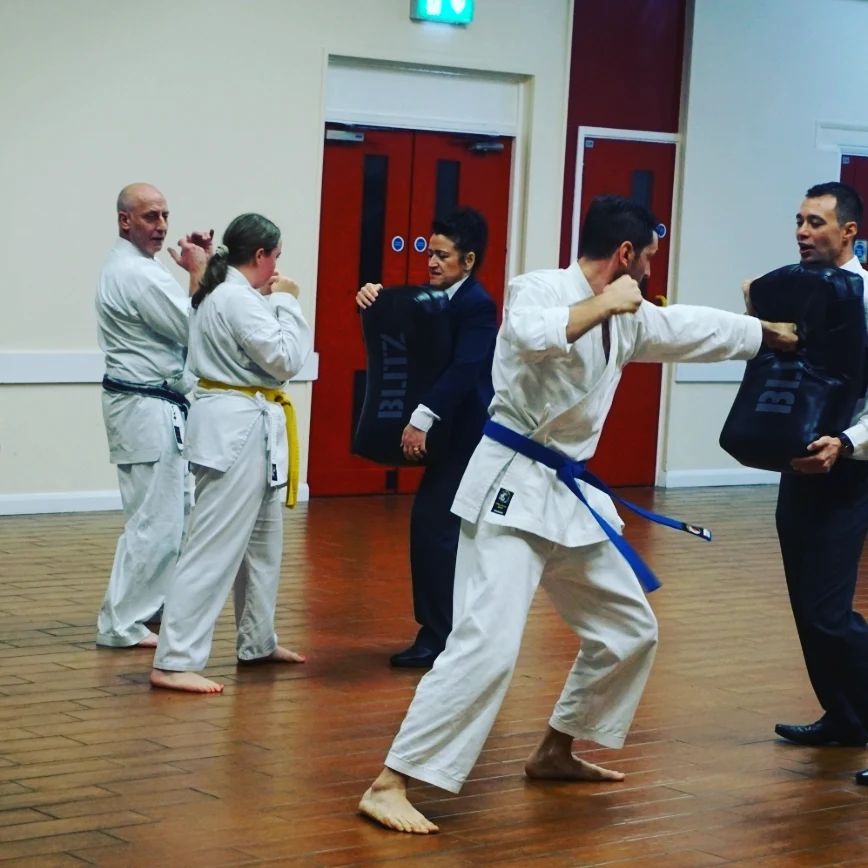
padwork
We use modern equipment such as Focus Pads, Kick Shields, Thai pads & BOBs to develop striking power and technique.
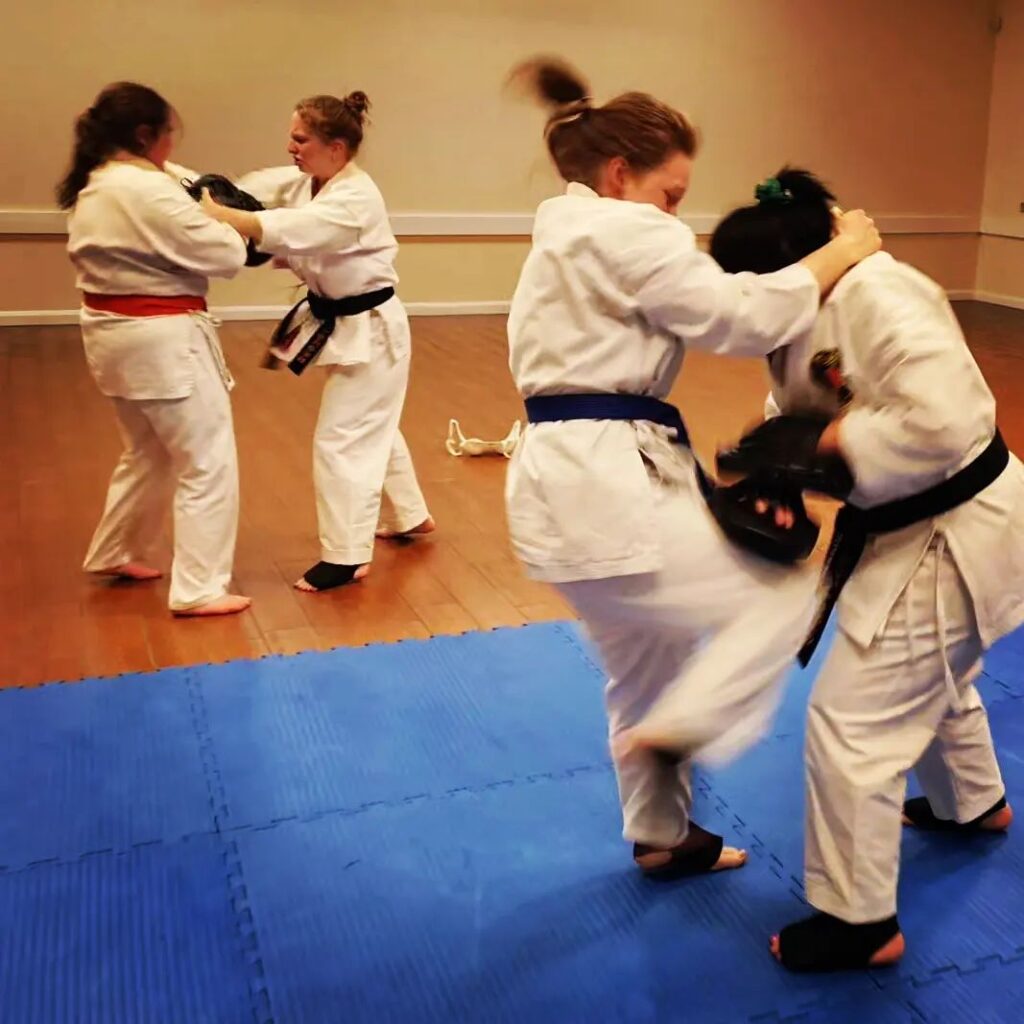
oyo Bunkai 応用分解 (Analysis + application).
The study, analysis and application of the combative applications of the Karate Kata.

Kumite 組手 (exchange of hands).
Sparring is the culmination of all of the above training, allowing students to put the skills that have learnt into practice. We practice various types of Kumite to pressure test our techniques against resistance in a safe and controlled environment.
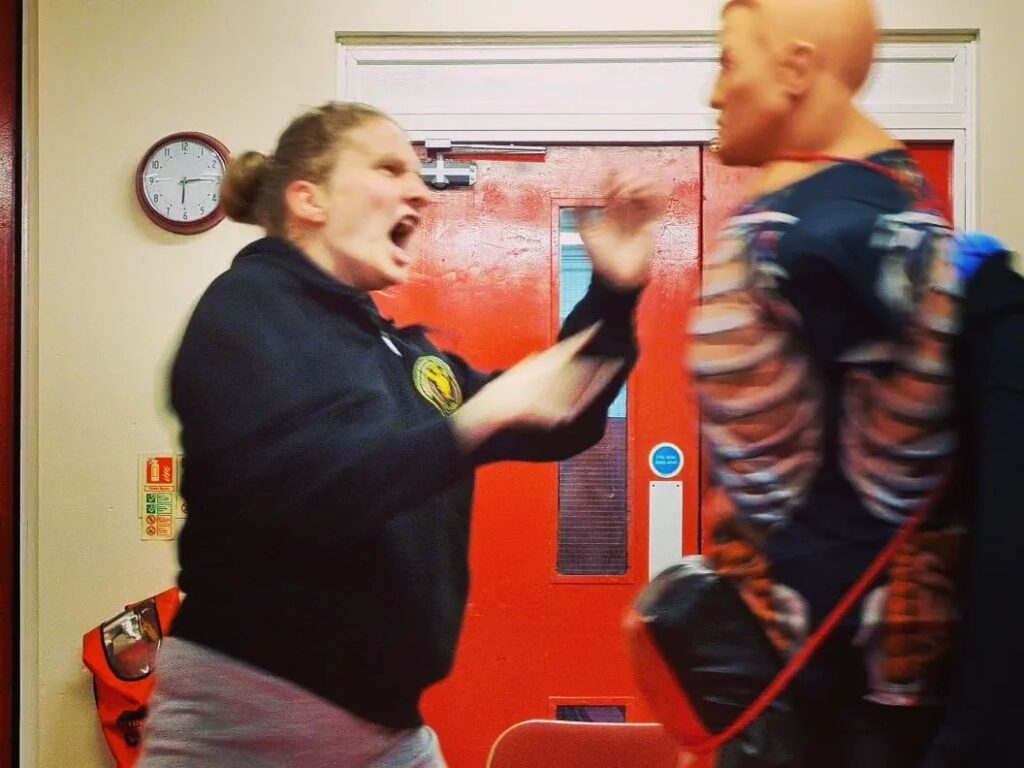
goshin jutsu 護身術 (self defence)
We teach traditional & modern methods of Self Protection & Self Defence woven into our Karate Practice. Self Defence is a legal term used to describe a legally justifiable physical act of defending yourself, defending others or to prevent a crime. The term Self Protection is used to describe methods of avoiding violence by developing situational, environmental & behavioural awareness, understanding how violent individuals operate and using a proactive mindset to avoid violent situations altogether..
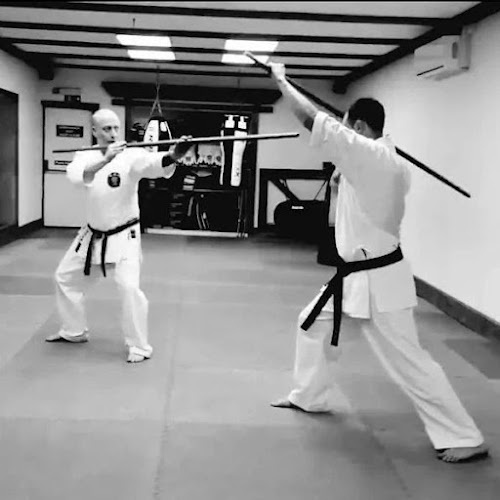
Kobudo 古武道 (Ancient martial arts)
Kobudo is the practice of weapons used in the ancient Ryukyu’s. Some weapons evolved from farm implements which could be used by peasants against the swords of wealthier attackers. Other kobudo weapons were used by the upper class. We teach historically correct Kobudo of the Ryukyus as taught to Ryukyukan members by Hanshi Nohara.
The practice of Kobudo improves the use of dachi (foot, leg and hip position) to generate power, conditions arm and hands, and sharpens focus and awareness
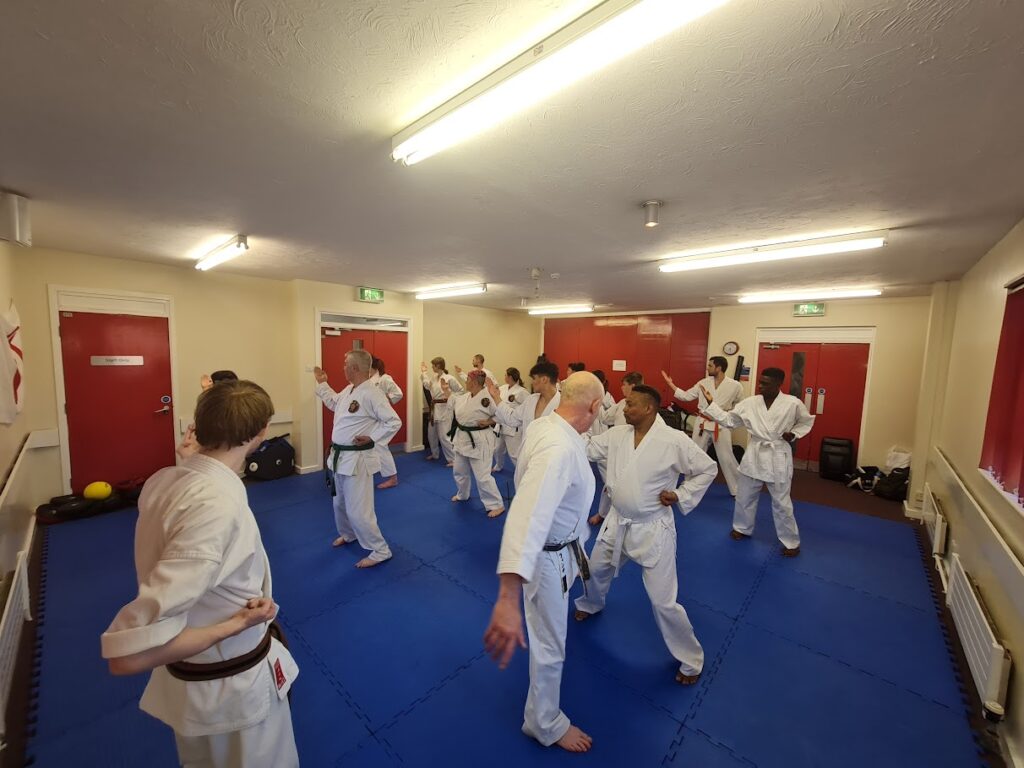
Naihanchi KATA ナイハンチ
Naihanchi kata is the most severe kata from the Shuri-te lineage, a tanren (conditioning for toughness) kata which involves strong stable footwork, side to side movements and natural breathing techniques.
Naihanchi kata is aimed at training one’s body strictly, fostering a spiritual force which comes from the perseverance of severe training. Students begin with Naihanchi, and constantly return to this kata with higher levels of understanding. That’s why it is said that ‘Everything begins and ends with naihanchi’ in the Shuri-te system.
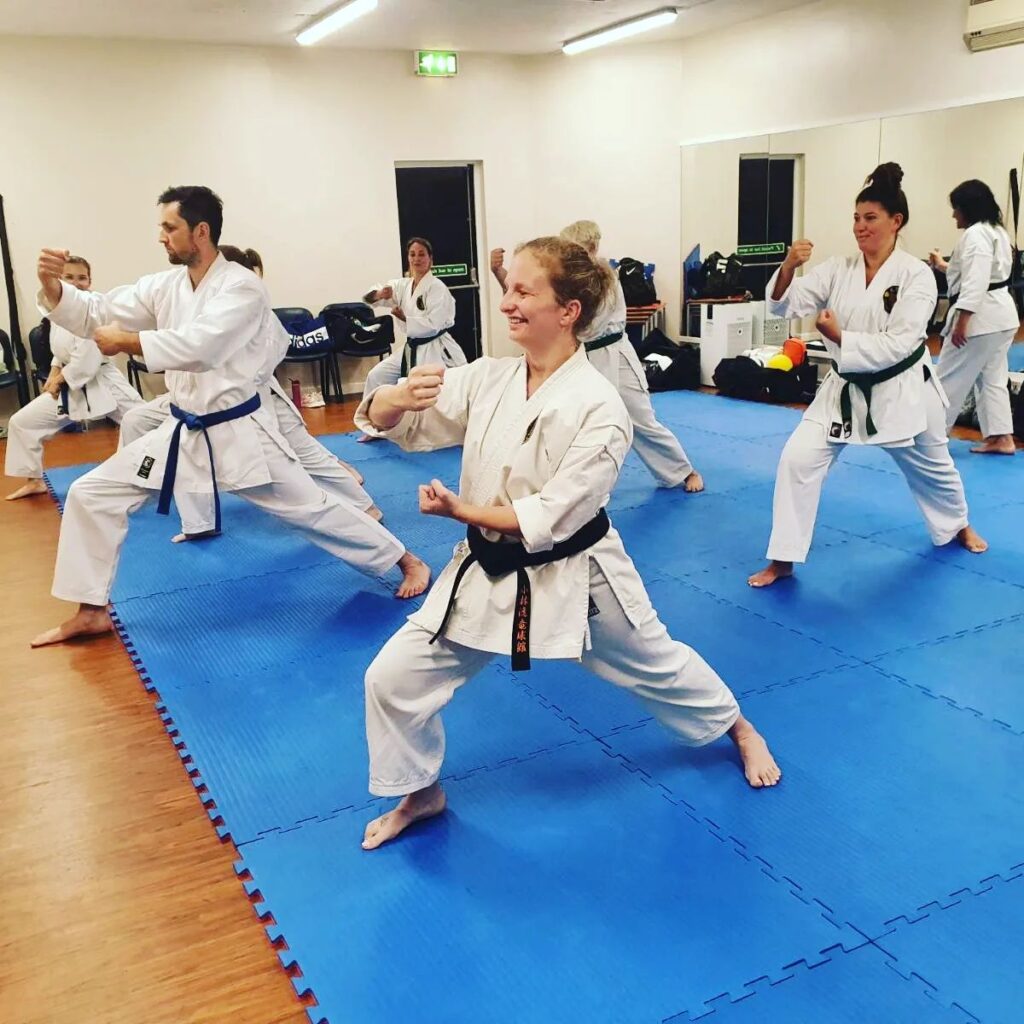
shorin ryu kata 小林流形
Shorin-ryu Kata List: Naihanchi Shodan, Naihanchi Nidan, Naihanchi Sandan, Pinan Shodan, Pinan Nidan, Pinan Sandan, Pinan Yondan, Pinan Godan, Kusanku (sho) and Kusanku (dai) Passai (sho) and Passai (dai) Gojushiho, and Chinto.
The Pinan kata was created by Anko Itosu as a training aid for his young students, and can be found in many karate styles today. It is said that Naihanchi is well suited for toughening the body and spirit, Kusanku is good for fostering alertness, and Passai is suited for putting training into practice. Chinto kata contains beautiful flowing Shuri-te movement. The fifty-four advanced karate movements found in the Gojushiho kata are said to have been hidden in an ancient Okinawan dance.
RYUKYUKAN TERMINOLOGY
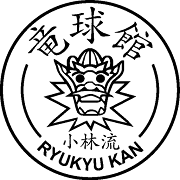
CLASS TIMES
monday evening CROWN Center
18:30-19:00
Shisa: (4-6 Years)
19:00-20:00
Juniors (Intermediate)
(7-12 Years old)
20:00-21:30
Seniors
(13 years and above)
tUESday evening CROWN Center
7:30-18:30
Juniors (Beginner)
(7-12 Years old)
thursday evening eversley leisure center
18:30-19:30
Juniors (All grades) (7-12 Years old)
19:30-21:00
Seniors (13 years and above)
saturday morning CROWN center
09:30-10:00
Shisa (4-6 Years)
10:00-11:00
Juniors (All Grades) (7-12 Years old)
11:00-12:30
Seniors (13 years and above)
